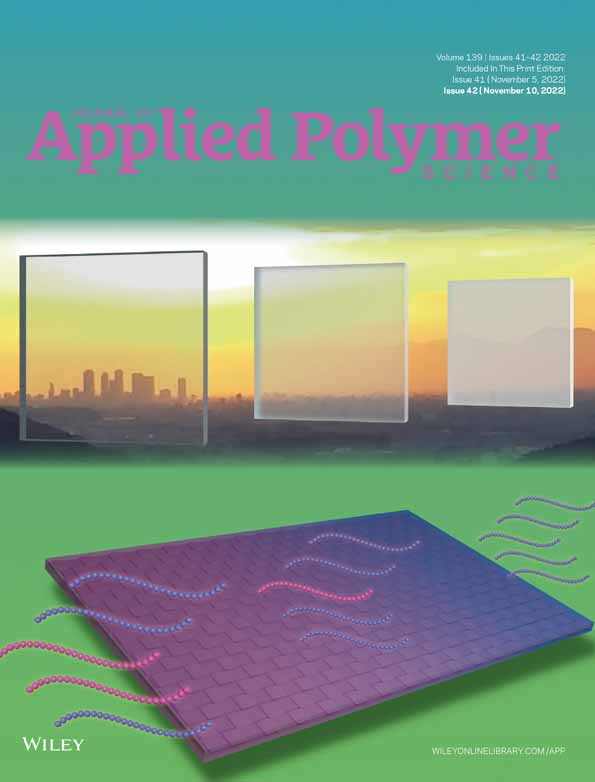Preparation of BTCA-esterified cellulose nanocrystals and effects on mechanical and thermal properties of polypropylene composites
Funding information: Department of Science and technology of Guangdong Province
Abstract
In this study, cross-linked cellulose nanocrystals (CNC) were esterified using 1,2,3,4-tricarboxylic acid (BTCA) to decrease the hydroxyl content of the nanocellulose, control its hydrophilic/hydrophobic degree, and improve its compatibility with the polypropylene (PP) matrix. The mechanical and physical properties of nanocellulose-reinforced polypropylene composites were investigated after they were manufactured via melt extrusion using a twin-screw extruder. FTIR and XPS analysis revealed that the nanocellulose chain was successfully esterified utilizing BTCA. The results from SEM and Mapping demonstrated that the nanocellulose was spread equally throughout the matrix. By characterizing the 5 wt% CNC/PP composite material with DMA and tensile testing devices, the elongation at break decreases, the rigidity increases, and the tensile strength increases to 50.5 MPa, a 25.5% increase over pure polypropylene. Simultaneously, DSC data demonstrated that nanocellulose provided a heterogeneous nucleation site, expedited polypropylene crystallization, and was advantageous for polypropylene processing. According to the results of TG/DTG, esterified CNC/PP composites containing 5% CNC had the highest thermal resistance, with Tonset and Tmax increasing by up to 66 and 11.6°C, respectively, when compared to pure PP. Following a thorough investigation and evaluation of the samples' mechanical and thermal properties, it was determined that BTCA esterification cross-linking is an effective method for surface modification of nanocellulose, as it increases the compatibility of nanocellulose with polypropylene, improves the mechanical properties of polypropylene, and thus expands its application range.
Open Research
DATA AVAILABILITY STATEMENT
Research data are not shared.




